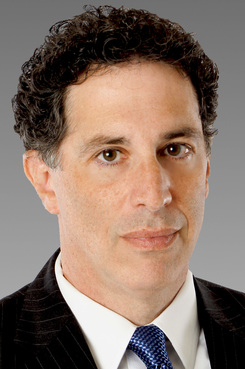How to Protect the Shape of Candy and Why It's Worth the Fight
The Kit Kat bar is an international sensation, and as a result, Nestle has been trying to protect the candy bar's shape throughout Europe. A trademark application for its appearance was filed with the European Union Intellectual Property Office (EUIPO) in 2002, and a trademark registration was granted in 2006, but earlier this year, the EU's General Court declared the registration invalid.
September 25, 2018 at 02:14 PM
6 minute read
 Lawrence Ashery.
Lawrence Ashery.
The Kit Kat bar is an international sensation, and as a result, Nestle has been trying to protect the candy bar's shape throughout Europe. A trademark application for its appearance was filed with the European Union Intellectual Property Office (EUIPO) in 2002, and a trademark registration was granted in 2006, but earlier this year, the EU's General Court declared the registration invalid.
Kvikk Lunsj, a candy bar manufactured in Europe, looks nearly identical to a Kit Kat bar. It features four long portions of candy, each resembling a stretched out pyramid, with the top of each portion chopped off (the mathematical term for this shape is a pyramidal frustum). When Nestle received the European trademark registration for the shape of the Kit Kat bar, Kvikk Lunsj's then owner, Cadbury, began a court battle to invalidate the registration, and Mondelez (which acquired Cadbury) has continued the fight to this day. Earlier this year, the European Court of Justice ruled that the European trademark registration for the shape of the Kit Kat bar was invalid. Their reasoning? Nestle had not proven that the shape of a Kit Kat bar was distinctive throughout the entire European Union; it had never been proven that a Kit Kat bar could be recognized by its shape in Belgium, Ireland, Greece and Portugal. The case will now go back to the EU Board of Appeal for further review.
Safeguarding the appearance of a food product, however, is not a concern that is limited to Europe. Protecting the shape of a piece of candy is a valuable intellectual property right, and food manufacturers throughout the world devote tremendous resources to prevent the appearance of their products from being copied by competitors.
One typically thinks of a trademark as a name (e.g., Google, Cadillac and Mrs. Butterworth's) but trademarks can have other forms as well. The purpose of a trademark is to identify the source of goods or services, and there are many ways to achieve that identification. Color, for example, may be used as a trademark—building insulation that is pink is a product of Owens Corning. A sound can be used as a trademark—the tune that many personal computers play when they are first turned on indicates that Microsoft Windows is in use. Even smell can be a trademark (although this is very uncommon)—Verizon has a “flowery musk scent” trademark registration for their stores.
The configuration of a product can also function, and be registered, as a trademark. In the United States, there is no federal trademark registration on the shape of a Kit Kat bar, but trademarks for plenty of other candies and treats have been registered. Here are a few examples, including how the candy is described in its U.S. federal trademark registration:
- Hershey Kiss (Registration: 2138566, First Use Date: July 1, 1907): “… a conically shaped candy piece equal to or larger than 7/8 of an inch high …”
- Dairy Queen Ice Cream (Registration 2183417, First Use Date: December 1948): ”… a three-dimensional form of ice milk, reduced fat ice cream or frozen yogurt confection molded form with a crossed over curl on top …”
- Tic Tacs (Registration 4051861, First Use Date: 1968): “… a three-dimensional oval shaped candy with slightly flattened sides and rounded edges …”
- Tootsie Pop (Registration 1459412, First Use Date: 1935): “… a raised band circumscribing a spherical body and lying in the plane in which a lollipop stick is located …”
So how does one acquire a trademark registration for the shape of a product in the United States?
To answer this question, it is necessary to understand two phrases: inherently distinctive; and noninherently distinctive. When a mark is inherently distinctive, it is immediately recognized as identifying goods (or services) from a single source. Take the mark Lexus. When buyers see the mark Lexus on various cars, buyers know that all of those cars come from a single source. Interestingly enough, inherent distinctiveness does not require that consumers know the actual name of the single source (e.g., consumers don't need to know that the trademark Twinkies is owned by the Continental Baking Co.); simply knowing that there is a single source is sufficient for inherent distinctiveness to exist. The shape of a product (such as the appearance of a bar of candy), however, is considered to be noninherently distinctive (i.e., it does not automatically convey to a buyer that a product (or service) comes from a single source). Protecting such a product configuration thus requires proof of what is called “secondary meaning,” i.e., that the mark has acquired distinctiveness (is identifiable as a single source of goods) within buyers' minds.
Proving secondary meaning is accomplished by providing factual evidence that buyers associate product configuration with a single source. Direct evidence of that association can include consumer testimony and consumer surveys. Circumstantial evidence of that association can include advertising expenditures, consumer studies, media coverage, unauthorized copying attempts, length and exclusivity of use. For each product configuration, the quantity, quality and types of evidence will be different, and the total strength of the evidence will be considered to determine whether secondary meaning exists for a particular product configuration.
Obtaining a federal trademark registration in the United State. for the shape of a piece of candy is thus possible, but it can be very difficult. To proceed, a registration application is filed with a description of the candy and a three dimensional drawing of the candy. A trademark examining attorney at the U.S. Patent and Trademark Office (USPTO) then reviews the application, and typically requires that the attorney who filed the registration application provide evidence of secondary meaning to prove that the candy's shape has become “distinctive.” The applicant's attorney provides the evidence, and the USPTO's trademark-examining attorney reviews the evidence to determine whether it proves that the requirements for distinctiveness have been met. If the examining attorney agrees, then a U.S. trademark registration is issued. If the examining attorney disagrees, then the applicant's attorney has a second opportunity to provide additional evidence. If the examining attorney is still not convinced, then the applicant may appeal to the Trademark Trial and Appeal Board (TTAB) for further consideration. If the TTAB appeal is not successful, further appeal to the federal courts is available.
Pursuing a federal trademark registration for the shape of a piece of candy can certainly be complex (and expensive), but for the candy manufacturer, protection of that shape is important for commercial success. Hence, manufacturers often seek that protection as an important part of their intellectual property strategy.
Lawrence E. Ashery is a partner in the Philadelphia office of Caesar Rivise. He focuses his practice on all aspects of intellectual property law. He can be reached at [email protected].
This content has been archived. It is available through our partners, LexisNexis® and Bloomberg Law.
To view this content, please continue to their sites.
Not a Lexis Subscriber?
Subscribe Now
Not a Bloomberg Law Subscriber?
Subscribe Now
NOT FOR REPRINT
© 2025 ALM Global, LLC, All Rights Reserved. Request academic re-use from www.copyright.com. All other uses, submit a request to [email protected]. For more information visit Asset & Logo Licensing.
You Might Like
View All
AI and Social Media Fakes: Are You Protecting Your Brand?

Neighboring States Have Either Passed or Proposed Climate Superfund Laws—Is Pennsylvania Next?
7 minute read
Seven Rules of the Road for Managing Referrals To/From Other Attorneys, Part 2
6 minute readTrending Stories
Who Got The Work
J. Brugh Lower of Gibbons has entered an appearance for industrial equipment supplier Devco Corporation in a pending trademark infringement lawsuit. The suit, accusing the defendant of selling knock-off Graco products, was filed Dec. 18 in New Jersey District Court by Rivkin Radler on behalf of Graco Inc. and Graco Minnesota. The case, assigned to U.S. District Judge Zahid N. Quraishi, is 3:24-cv-11294, Graco Inc. et al v. Devco Corporation.
Who Got The Work
Rebecca Maller-Stein and Kent A. Yalowitz of Arnold & Porter Kaye Scholer have entered their appearances for Hanaco Venture Capital and its executives, Lior Prosor and David Frankel, in a pending securities lawsuit. The action, filed on Dec. 24 in New York Southern District Court by Zell, Aron & Co. on behalf of Goldeneye Advisors, accuses the defendants of negligently and fraudulently managing the plaintiff's $1 million investment. The case, assigned to U.S. District Judge Vernon S. Broderick, is 1:24-cv-09918, Goldeneye Advisors, LLC v. Hanaco Venture Capital, Ltd. et al.
Who Got The Work
Attorneys from A&O Shearman has stepped in as defense counsel for Toronto-Dominion Bank and other defendants in a pending securities class action. The suit, filed Dec. 11 in New York Southern District Court by Bleichmar Fonti & Auld, accuses the defendants of concealing the bank's 'pervasive' deficiencies in regards to its compliance with the Bank Secrecy Act and the quality of its anti-money laundering controls. The case, assigned to U.S. District Judge Arun Subramanian, is 1:24-cv-09445, Gonzalez v. The Toronto-Dominion Bank et al.
Who Got The Work
Crown Castle International, a Pennsylvania company providing shared communications infrastructure, has turned to Luke D. Wolf of Gordon Rees Scully Mansukhani to fend off a pending breach-of-contract lawsuit. The court action, filed Nov. 25 in Michigan Eastern District Court by Hooper Hathaway PC on behalf of The Town Residences LLC, accuses Crown Castle of failing to transfer approximately $30,000 in utility payments from T-Mobile in breach of a roof-top lease and assignment agreement. The case, assigned to U.S. District Judge Susan K. Declercq, is 2:24-cv-13131, The Town Residences LLC v. T-Mobile US, Inc. et al.
Who Got The Work
Wilfred P. Coronato and Daniel M. Schwartz of McCarter & English have stepped in as defense counsel to Electrolux Home Products Inc. in a pending product liability lawsuit. The court action, filed Nov. 26 in New York Eastern District Court by Poulos Lopiccolo PC and Nagel Rice LLP on behalf of David Stern, alleges that the defendant's refrigerators’ drawers and shelving repeatedly break and fall apart within months after purchase. The case, assigned to U.S. District Judge Joan M. Azrack, is 2:24-cv-08204, Stern v. Electrolux Home Products, Inc.
Featured Firms
Law Offices of Gary Martin Hays & Associates, P.C.
(470) 294-1674
Law Offices of Mark E. Salomone
(857) 444-6468
Smith & Hassler
(713) 739-1250






